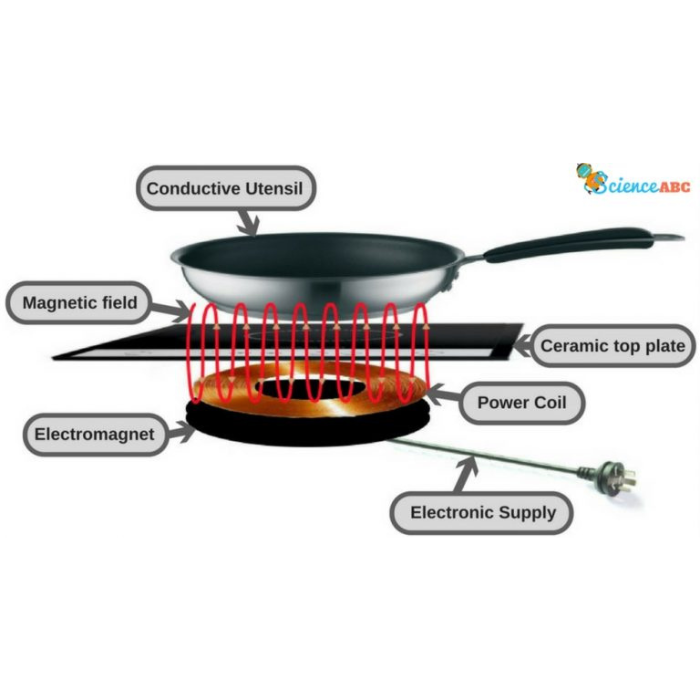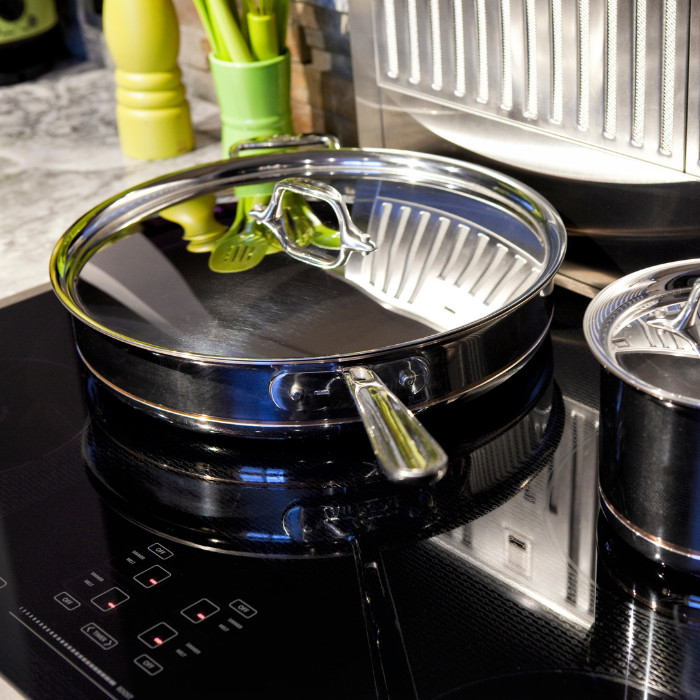For years, the battle between gas and electric cooktops has dominated the world of kitchen appliances. Choosing between them has been the source of much debate, with die-hard fans on both sides. The reality, though, is that both have their strengths and weaknesses.
But now, there is a new contender in the cooking game that you should seriously think about: induction cooktops.
What are Induction cooktops, and How Do They Work?
To put it simply, induction cooktops use a unique combination of electricity and magnetism to generate heat through an electromagnetic process. When you turn on your induction cooktop, an alternating electrical current flow through it, creating an electromagnetic field. This field, in turn, induces an electric current in your cookware, transferring energy and generating heat in your cookware. See the illustrated image from Science ABC below

What sets induction cooktops apart from electric cooktops is that there’s no intermediate step. With electric cooktops, the coils heat up, and that heat is transferred to your pot or pan. Induction cooktops, on the other hand, eliminate this middleman, so the glass surface remains cool and safe to touch; only the pot or pan heats up.
Advantages of Induction Cooktops Over Gas and Electric
Compared to gas stoves, induction cooktops have a significant safety advantage. Gas stoves produce open flames that release harmful chemicals like carbon monoxide, nitrogen oxide, formaldehyde, and methane, which are all detrimental to our health. Electric stoves don’t emit toxic fumes, but the power plants producing electricity often do, polluting our environment and air. Additionally, electric stoves tend to be less energy-efficient due to the intermediary step of heating coils, resulting in energy loss between the electrical current and cookware. This leads to increased pollution in the environment, as more energy is needed to be produced to do our cooking. Induction cooktops are far more energy-efficient, with minimal energy loss during cooking.
Estimates suggest that only about 10% of energy is wasted between the cooktop and the pot/pan. This means less energy is needed, reducing pollution. Other perks include faster water boiling, safety (no hot coils or open flames), and easy cleaning due to the flat surface.
What to Keep in Mind When Choosing an Induction Cooktop
Before switching to an induction cooktop, consider a few key factors. For induction cooking to work, your cookware must be made of magnetic materials, at least on the bottom. Materials like cast iron and stainless steel are perfect, while copper, aluminum, and glass won’t cut it. To check to see if your cookware is compatible, use a magnet. If it sticks, you’re good to go.

Handle your induction cooktop carefully, as any significant scratches or damage to the glass can lead to malfunction, expensive repairs, or even replacement. Since induction cooktops use electricity, they won’t work during power outages, unlike gas stoves. There is some evidence that the electromagnetism used in induction cooking can interfere with pacemakers (primarily those 20 years or older). If you have a pacemaker, consult your doctor before making the switch.
Perfect for Aging in Place
Induction cooktops are an excellent choice for those looking to age in place. Most meet ADA criteria, making them accessible for people with disabilities. The flat surface, combined with the fact that it only heats up when a pot/pan is on it, adds an extra layer of safety for those with hearing, vision, or mobility challenges.
Government Assistance
Lastly, there is good news for your wallet! The High-Efficiency Electric Home Rebate program can lower the cost of Energy Star-approved induction cooktops or ranges by up to $840. This money is deducted when you buy or install your appliance, so there is no need to file for a refund.
Practical Considerations
Before switching to an induction cooktop, be aware that it requires a 220v outlet, while gas stoves only need a 120v outlet. This could lead to electrical work if your home lacks the required amperage or voltage. Review the manufacturer’s wiring requirements, as induction cooktops necessitate copper wiring, and some homes have aluminum wiring. You’ll also need to cap any existing gas lines for safety.

At Stearns Design Build, we’re big fans of induction cooktops because they align with our commitment to creating healthier, happier homes. They’re energy-efficient and free from harmful chemicals. However, before making the switch, you must research and ensure they are the right fit for you. Induction cooktops are a fantastic addition to any kitchen, and we wholeheartedly recommend them as we stride into the future.









